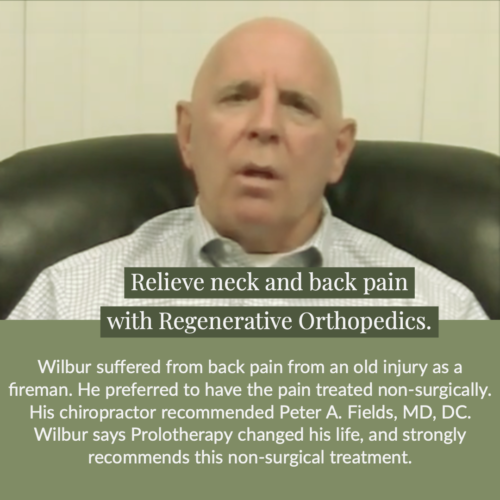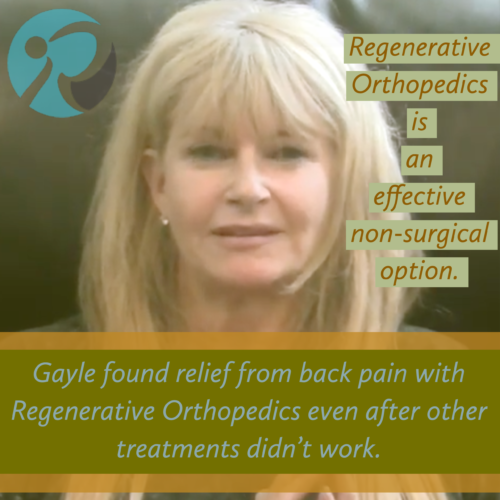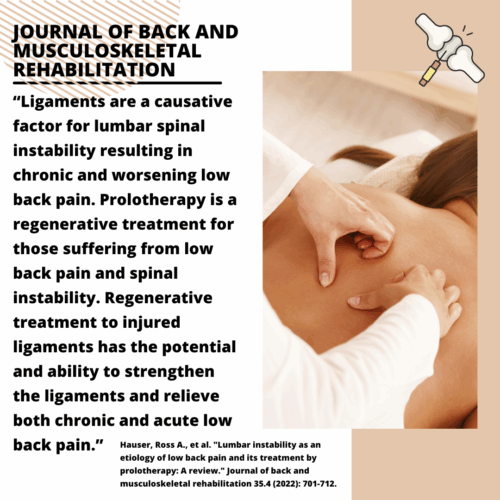 Degenerative disc disease is a common disorder of the spine that can result in persistent low back, thoracic, and neck pain. While it is widely diagnosed, degenerative disc disease is also widely misunderstood by the medical community and lay public alike.
Degenerative disc disease is a common disorder of the spine that can result in persistent low back, thoracic, and neck pain. While it is widely diagnosed, degenerative disc disease is also widely misunderstood by the medical community and lay public alike.
Perhaps the greatest misconception is the idea that the degenerated discs themselves are the primary cause of pain and therefore require a treatment geared towards replacement or repair of the discs, and missing an important underlying source of instability and pain.
Spinal discs work as a type of shock absorber between the vertebrae, or bones, of your spine. They help your back to stay flexible and allow you to bend and twist. With age, spinal discs can show signs of wear and tear. They begin to break down and may not work as efficiently. Nearly everyone’s spinal discs will break down with age, but not everyone will feel pain.
A person with a degenerated, bulging, or herniated disc noted on an MRI, must realize that this may be a coincidental finding and unrelated to the actual pain he or she is experiencing. How can that be? In Degenerative Disc Disease, the disc is losing water and flattening. It is normal for this to occur with age. Interestingly, it is also normal for a disc to bulge while bending. So what is causing the pain then? It is very likely that the pain is being caused by injured ligaments, which are full of nerve tissue, and will send pain signals when tweaked.
The disc begins to degenerate as soon as the ligaments of the spine weaken. This happens after some sort of injury to the ligaments, including wear and tear. The weak and loose ligaments allow for an unstable spine and one where the vertebrae are able to move too much, resulting in more injury and pain.
In an effort to stabilize the vertebrae, the body tenses the muscles, in an attempt to correct the problem. A person will experience this as muscle spasms. The excessive movement puts extra stress on all of the structures of the spine, including the discs. The discs will respond to the added stress by flattening.
A downward cycle of degeneration is created because the ligaments will now have to work even harder, since the discs can’t do their job correctly, which then weakens the ligaments further, and then adds to the response of the discs to flatten. The sufferer will of course experience pain as a result of the degeneration. The added stress and pressure may cause the disc to herniate. When a disc herniates, it means the soft, gelatinous solution inside is no longer held in place by the tough outer ring of tissue and the disc is now in a weakened state.
 Regenerative Orthopedics is an effective treatment to stop the cycle of “Degenerative Disc Disease.” Since the underlying problem that starts the discs to degenerate is the instability of the spine due to ligament weakness or injury, it would make sense then to strengthen and repair the ligaments. What treatment does that? Right…Regenerative Orthopedics!
Regenerative Orthopedics is an effective treatment to stop the cycle of “Degenerative Disc Disease.” Since the underlying problem that starts the discs to degenerate is the instability of the spine due to ligament weakness or injury, it would make sense then to strengthen and repair the ligaments. What treatment does that? Right…Regenerative Orthopedics!
In the 1950s, a doctor named George S. Hackett studied the pathology of chronic low back pain and disc degeneration. He published research linking these conditions to the instability of the vertebral column. He was one of the first doctors to ever point to ligament laxity or weakness as a reason that discs become degenerated.
The soft, compressible spinal discs lie between two vertebrae and provide cushion and shock absorption. The facet joint is where the top vertebrae contact the vertebrae below. This joint is surrounded by a capsule made up of ligaments. Together these segments are known as facet joints. Every time one bends forward, backward, or twists, pressure is put on these facets. They are under a lot of strain all day long!
The vertebrae themselves are held together through a mesh of ligaments that hold the spine in alignment and take the pressure off the facet joints. Dr. Hackett recognized that if the ligaments are loose or damaged, they allow excessive movement of the vertebrae and put extra gravitational pressure on the discs. We’ve noted earlier that when this happens, discs can protrude or herniate. Addressing the underlying ligament laxity is key to treating disc degeneration as well as preventing further damage and degeneration.
By applying Regenerative Orthopedics, such as Stem Cell Therapy, PRP, Prolotherapy, to the weakened ligaments, the ligaments become strengthened, thereby halting the progressive degeneration of the intervertebral discs. A patient with persistent back pain can be treated with these regenerative injections into the weakened vertebrae of the low back, mid-back, and neck. Regenerative Orthopedics is very effective at alleviating pain from degenerative disc disease.
Unfortunately, the focus of degenerative disc treatment today is often centered on treating the discs, and this treatment is oftentimes surgery. Surgeries can include a discectomy, which removes part of the disc, or may mean removal of the entire disc and replacing it with a cadaver or artificial disc. In some cases, spinal fusion is recommended. During spinal fusion, the damaged discs are removed and replaced, and the affected levels of the vertebrae are then permanently fused together.
While these methods increase joint space by inserting replacement discs, they do not address the problem of vertebral instability due to weakened ligaments, and therefore do nothing to actually take pressure off of those discs or preventing the facet joints from further breakdown.
It is important to understand that the facets are more commonly the cause of pain. These are where the vertebra on the top connects to the vertebra on the bottom. The vertebrae are surrounded by a thick capsule of ligaments that becomes weakened, torn, or damaged over time, resulting in a lot of pain. Spinal fusion actually encourages increased degeneration at the sites above and below the fusion, frequently resulting in more pain.

Another factor hindering our understanding of vertebral instability and ligament weakness is the dependence on imaging to diagnose and treat musculoskeletal injuries. Of course, MRI imaging is very helpful in the medical fields. However, many rely on imaging instead of using physical examination and good history taking for diagnosing. And as we said earlier, MRI’s can misdiagnose disc herniations.
It is important to rule out ligament injury and instability and treat it accordingly especially since a large majority of disc degeneration is due to vertebral instability and ligament weakness. With proper treatment, through therapies like Regenerative Orthopedics, physicians are able to accurately treat the source of their patients’ pain.
The Journal of Back and Musculoskeletal Rehabilitation says, “Ligaments are a causative factor for lumbar spinal instability, resulting in chronic and worsening low back pain. Prolotherapy is a regenerative treatment for those suffering from low back pain and spinal instability. Regenerative treatment to injured ligaments has the potential and ability to strengthen the ligaments and relieve both chronic and acute low back pain.” (1)
Rather than undergoing unnecessary surgeries that do not address the root cause of the symptoms, choose instead to seek out a less invasive treatment capable of strengthening weakened ligaments and tendons and thereby eliminating pressure on the vertebral discs.